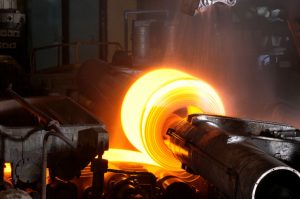This Morning in Metals: Steel capacity utilization hits 85.3%
This morning in metals news: U.S. steel capacity utilization reached 85.3% last week; meanwhile, Lightsource bp touted the launch of a Colorado solar project and the world’s “first steel mill to be powered largely by solar energy”; and, lastly, Rio Tinto announced new decarbonization targets.
We’re offering timely emails with exclusive analyst commentary and some best practice advice. Sign up here.
US steel capacity utilization rises to 85.3%

The U.S. steel capacity utilization rate reached 85.3% for the week ending Oct. 16, the American Iron and Steel Institute (AISI) reported.
Steel production during the week totaled 1.88 million net tons, up 1.3% from the previous week. Furthermore, steel output during the week rose by 21.5% year over year.
Meanwhile, in the year to date, steel production totaled 75.1 million net tons. The total marked a 20.3% year-over-year increase.
Pueblo steel mill goes solar
Lighthouse bp, in collaboration with Xcel Energy and EVRAZ North America, announced the launch of the new 300 MW Bighorn Solar project.
The project is on 1,800 acres on EVRAZ Rocky Mountain Steel property in Pueblo, Colorado. Lightsource bp said the project will power the Pueblo steel mill, making it the world’s first steel mill powered “largely by solar energy.”
“It is the largest on-site solar facility in the US dedicated to a single customer, with more than 750,000 solar panels providing nearly all the plant’s annual electricity demand,” Lightsource bp said in a release. “This will enable the mill to produce some of the world’s greenest steel and steel products. Already, the plant recycles scrap metal to produce new steel products, including some of the most sustainably made rail in the world.”
Lighthouse bp said it expects the project to come fully online in November 2021.
Rio Tinto announces new emissions reduction targets
Speaking of sustainability, miner Rio Tinto today unveiled plans to ramp up its decarbonization efforts.
Rio Tinto said it now aims to reduce its Scope 1 and 2 carbon emissions by 50% by 2030, more than tripling its previous target.
Furthermore, it is targeting a 15% reduction in emissions by 2025, five years earlier than previously. The group said $7.5 billion in direct investments will support its efforts to lower emissions between 2022 and 2030.
“In recognition of the broader carbon footprint of the commodities it produces, Rio Tinto will accelerate its investment in R&D and development of technologies that enable its customers to decarbonise,” Rio Tinto said. “Working in partnership with governments, suppliers, customers, academia and others Rio Tinto will continue to develop technologies like ELYSISTM for carbon-free aluminium and multiple pathways to produce green steel.
“To meet additional demand created by the global drive to net zero emissions, Rio Tinto will prioritise growth capital in commodities vital for this transition with an ambition to double growth capex to about $3 billion a year from 2023.”
More MetalMiner is available on LinkedIn.



Leave a Reply